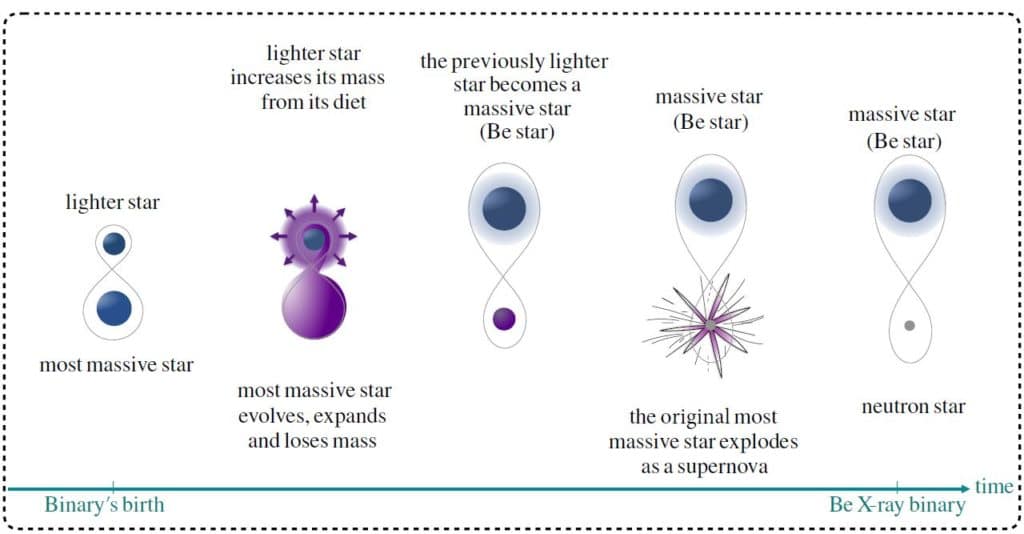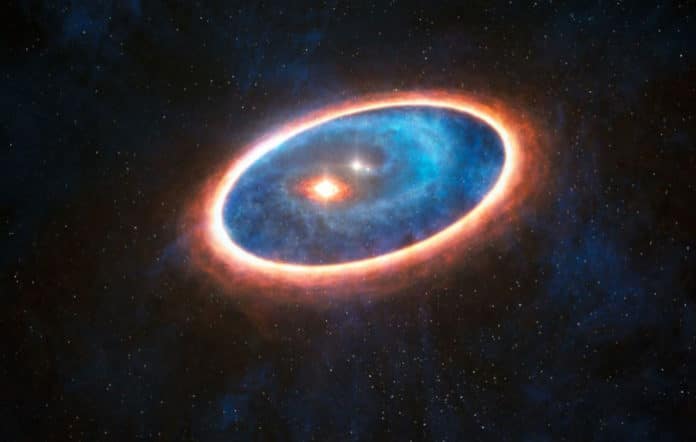Be/X-ray binaries (BeXRBs) are a class of high-mass X-ray binaries that consist of a Be star and a neutron star, orbiting around a rapidly rotating massive star. This rotation leads the massive star to produce a disk of outflowing material—the neutron star accumulates some of this.
The neutron star then shoots off X-ray radiation that is observable and measurable by scientists.
In a collaborative study by the OzGrav, Max Planck Institute of Hannover, Monash University, and the University of Birmingham, scientists sought to comprehend the origin of the properties of ‘Be X-ray’ binaries observed in the Small Magellanic Cloud.
For this, scientists used the COMPAS code to simulate an environment like the Small Magellanic Cloud. They compared the orbital properties of the simulated Be X-ray binaries with the observed ones and uncovered the evolution of these star systems.
They found: At first, two stars take place the birth in the binary system. The most massive star evolves quicker and expands.

Due to the proximity within the two stars, the massive star feeds the material to the small star.
By the time, the massive star loosens up all its mass. On the other hand, the small star becomes full and not accept all the ‘food’ (material).
In Be X-ray binaries, the stars’ diets are more generous than astronomers previously assumed. Consequently, well-fed stars become massive and spin rapidly.
Later, the massive end up exploding as a supernova, leaving behind a small but very dense neutron star. If the stars survive the explosion, they form a Be X-ray system, with a neutron star orbiting a massive and rapidly rotating star.
Journal Reference:
- Be X-ray binaries in the SMC as (I) indicators of mass transfer efficiency. arXiv: 2003.00195
